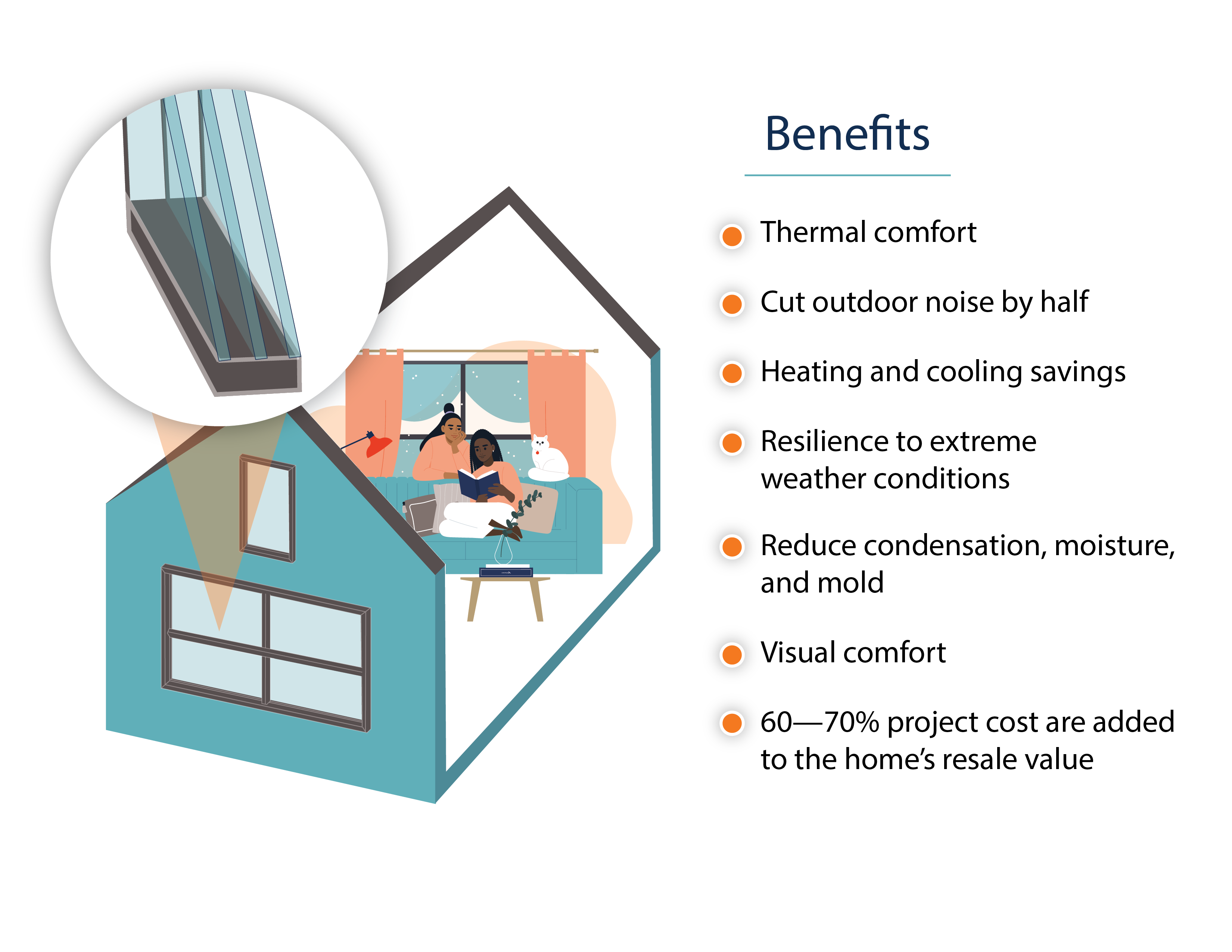High-Performance Windows
High-Performance Windows (HPWs) reduce heat loss, save energy,
and increase comfort.
Transform your home into a haven of comfort, savings, and efficiency by installing ENERGY STAR triple-pane windows – the smart choice for homeowners, builders, and contractors alike.
We’re passionate about bringing you the latest in window technology. ENERGY STAR triple-pane windows aren't just products; they're a revolution in home improvement. Imagine a home where energy bills shrink, comfort soars, and outside noise fades away. That's the power of high-performance windows.
For only $50-100 more per window, upgrading your windows can have a big impact on improving your business and life at home!

High-performance windows (HPWs) are low U-factor (equivalent to high R-value) products used in single- and multifamily homes and some commercial buildings. These are defined as windows that meet the ENERGY STAR criteria and have a U-factor of 0.22 or lower (a measure of the insulating power).
Window technology has advanced over the years from the original fixed single-pane window to operable assemblies that include multiple panes and individual components to improve the product’s thermal performance. When it comes time to buy windows, ask your window professional for ENERGY STAR triple pane windows.
Whether you're a homeowner dreaming of a cozier, more efficient living space, or a builder looking to offer the best to your customers, you're in the right place.
For Builders:
For Homeowners:
These products improve the performance of a building by improving the building’s thermal insulation, air leakage, and solar heat gain to optimize energy use and HVAC performance. These products also offer an impressive array of non-energy benefits including improved comfort, half as much outdoor sound, and health benefits from reduced condensation.
Window’s are the least efficient element of the building shell, and so choosing windows with the best insulating power is important. As the nation moves to decarbonize its buildings, it will be imperative to improve this weak link.
Better envelopes can allow for smaller HVAC and heat pump systems, which will maximize their effectiveness, reduce operational costs, and minimize grid impacts of electrified heating loads. And because windows can have a decades-long service life, decisions made today will have generational impacts.
